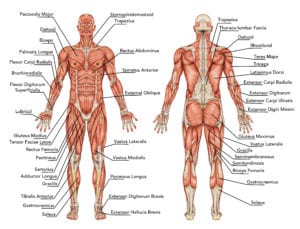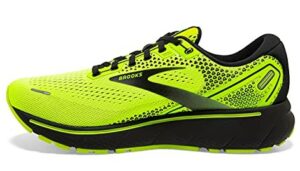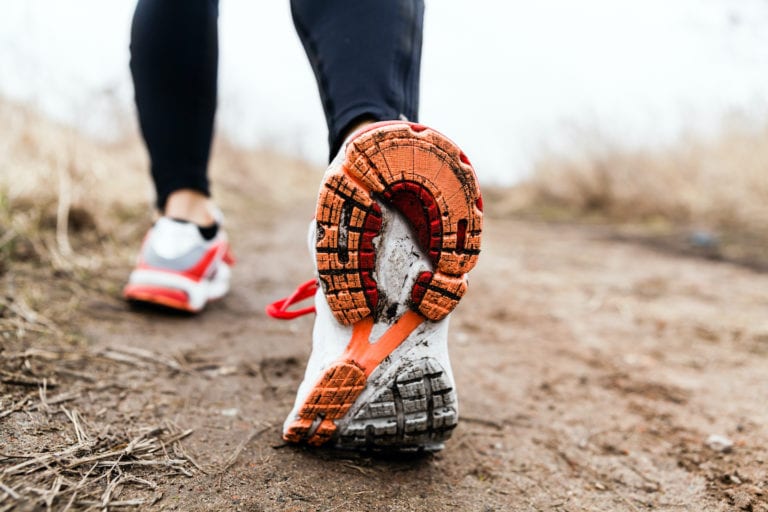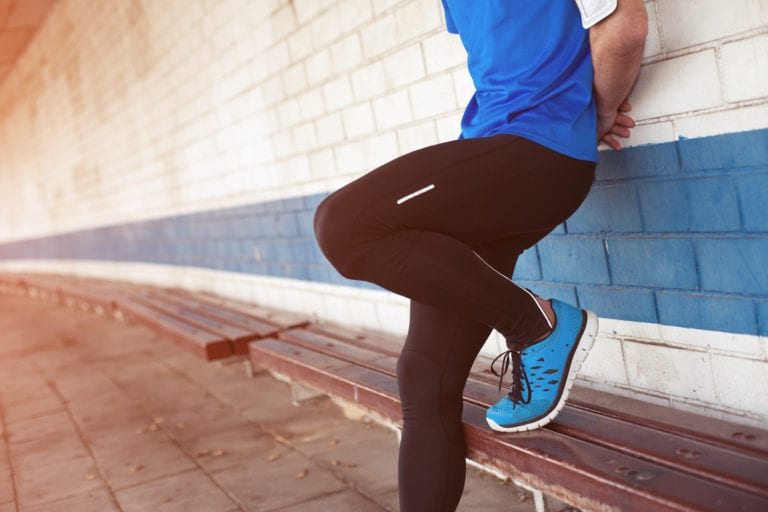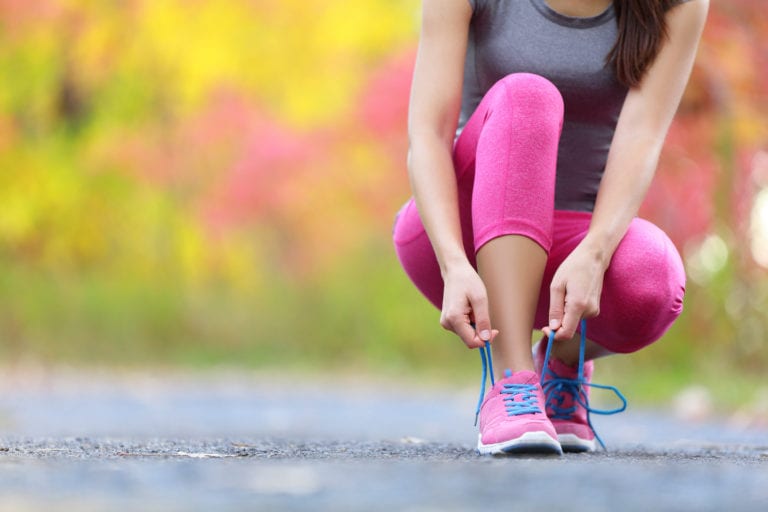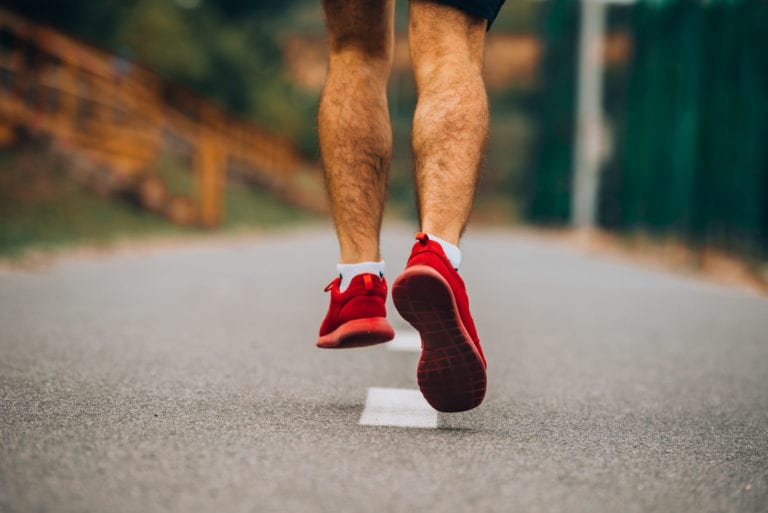We all have that friend who boasts about going for a 30-minute jog every day, while conflicting reports suggest that perhaps they should take more time off. Is running every day a good idea? How often should you run, and should you run at all?
The benefits of running are coming into scrutiny more and more as science shows us that time spent outdoors and moving is good for our brains, while most Americans don’t meet the
Physical Activity Guidelines for aerobic and muscle-strengthening activity.
Running can give you better immunity, a lifted mood, stronger joints and cardiovascular system, and it can improve your relationships and even lift your confidence. For women and men alike, running regularly and measuring progress towards a goal can be an instant injection of positivity.
How does running impact your life, why should you run, and what are the benefits of running regularly? Let’s have a look at the basics of running vs walking and all the benefits you can gain.
Walking vs. Running: Which Exercise is Right for You and Why?
Being active every day is good for your health. You will be stimulating your cardiovascular system, which yields multiple benefits:
- Increased stamina and overall vitality;
- Fat-burning and weight loss;
- Helps prevent chronic illnesses;
- Gives you an instant mood lift and supports your mental health etc.
Studies show that just
30 minutes of moderate-intensity exercise, performed three times a week, reduces anxiety and depression. Moreover, consider that a large majority of us lead sedentary lives, sitting behind a desk in a motionless posture for big chunks of the day. By getting off the chair and moving outdoors a little bit every day, you will counteract the paralyzing effects of
long-term sitting.
So, which is best: walking or running?
Walking will give you similar benefits to running, but without the intensity. Therefore, it’s an ideal beginner’s exercise and
you can combine walking with running in incremental outings. For example, start with walking 30 minutes daily, then move to walking 10 minutes, jogging 5, and alternating, eventually alternating 5 minutes of walking with 10 minutes of running and so on. It’s an easy way to gradually
ease yourself into running.
Walking also doesn’t consume as many calories as running. For an average 160 lbs person, walking at 3.5 mph (miles per hour) will burn c.
157 calories over 30 minutes. By comparison, running at 5 mph will burn c. 303 calories for the same duration. However, the benefit of walking is that it gives you that first step into running and makes the idea of running less daunting to beginners.
Walking is also advisable over running when you’re recovering from an injury (run/walk workouts are a staple of recovering athletes) and when you have medical reasons for keeping your heart rate lower. The beauty of walking is that it’s pretty much accessible to any able-bodied person, regardless of fitness levels.
You can also enhance your walking workouts by adding a hillier or more undulating route to your routine, as incline walking will take more effort. Wearing a backpack with some additional weight will also strengthen your leg muscles and give you more cardio benefit, once you find plain walking easy enough.
What Does Regular Running Do to Your Body?
Aerobic exercise is good for your heart and yields a host of other benefits we’ll cover below but you may be wondering if running can be bad for your body or if
too much running can hurt you. This is a misconception because, in fact,
most of the injuries associated with running can be avoided through a gradual increase in intensity and volume and the correct choice of footwear.
In terms of body appearance and body mass composition, the benefits of running can be seen quite rapidly once you take up the sport. When you run, you’ll create a calorie deficit by comparison to being inactive, all other things being equal. Over time,
this will help your body burn fat and lose weight.
Additionally,
a steady increase in running, associated with some cross-training such as strength and conditioning exercises, will lead to a more leaned, toned physique. This happens through muscle development and fat burning.
Did you know that
running can help you develop muscles, not just burn fat? Running uphill is equivalent to strength training for your thigh and calf muscles, as is running downhill (especially on more technical mountain trails). As you use your arms to propel and balance, you are also working your upper body and getting more definition. Finally, by engaging your core muscles to keep you balanced and upright during running, you are also
developing your abs.
Note: It’s worth keeping in mind that all the fitness benefits you’ll encounter when you first start running will eventually plateau as the body gets used to the effort. This is why you need to keep your workouts varied and we strongly encourage you to do some cross-training, too.
Top 7 Benefits of Running for Everyone
Running makes you stronger for longer
Regular runners lead longer lives. A systematic
review conducted in 2018 by the
British Journal of Sports Medicine looked at research on running and longevity, concluding that, across all causes of mortality, runners have c. 25-30% lower rate of mortality than non-runners. Some papers suggest that
running can add up to 3 years to your life expectancy.
The reasons? Greater
cardiovascular capacity, leading to a stronger heart and blood circulation, lower cholesterol, lower body fat… all pointing to living for longer.
Moreover, runners tend to not just live longer, but live better.
Researchers at Stanford University compared runners in their 50s to non-runners, to find that runners were reaching certain “disability scores” 11 to 16 years later than non-runners. This would suggest that, by running, you’ll stay in overall better shape, enabling you to enjoy those extra years of life.
Running can help improve your sleep quality
Johns Hopkins Medical Center
research suggests that
cardiovascular exercise will help you fall asleep faster and have a better sleep. You should listen to your body to figure out the best time of day to exercise, as some people find it hard to fall asleep after
running in the evenings. However, that varies by person.
Sleeping is also
essential for recovery. The more and better you sleep during your run training, the better your body will take on the extra workout load, enabling you to continue getting stronger and fitter.
Running is great for your back and joints
The health benefits of running extend to your joints and back, despite what you may think at first glance. Although an impact sport,
running has been proven to lead to a lower risk of arthritis. Even ultra-marathon runners appear to have healthy knees according to
studies.
Moreover,
running can be good for back pain and will help you build a strong spine. Research published in
April 2017 showed that runners had larger, healthier discs than non-runners. And, as running can help strengthen your core, it will also support your spine better and alleviate potential back pain caused by poor posture and weak core support.
Regular running can boost your immunity
Any form of exercise that gets the blood pumping and your body moving is good for your immune system. One of the benefits of exercise, including running, is that it gets us out of the house and into the sunshine, allowing the body to boost its vitamin D intake.
Research shows that
the more time you spend outside, the better your immunity levels.
Running reduces your risk of serious disease
When it comes to longer-term health benefits,
running has been linked to lower risk of chronic diseases. The
Journal of the American Medical Association published
research into cancer incidence in the US population which showed that high-fitness exercisers, including runners, were at a lower risk of developing 26 different types of cancers than those who did not run or exercise at all.
Additionally, high blood glucose levels often lead to diabetes and are a major concern in modern society because of our diets.
Runners have a lower risk of developing diabetes, thanks to its glucose regulating effect. Most recently, reports show that runners have a
72% lower rate of diabetes development than non-runners.
Running is great for mental health
Beyond the physical advantages, running has great mental health benefits.
Running produces endorphins, released in our bodies after exercise to give us the “happy feeling” after a workout. This has led to some great findings, including that it is an effective treatment against depression.
Only a few minutes of
jogging can clear your head and allow you to re-focus, becoming more productive and engaged in your daily life. In combination with fresh air and being in nature, especially for trail runners, this is a powerful boost against anxiety, depression, and feelings of being overwhelmed.
Running can improve your relationships
Finally,
running can be a great catalyst for all your relationships. Because of the mood improvements provided by regular exercise, your quality of life will improve and so will your interactions with those around you. Even beyond that, running can be a social experience, too. You can join running clubs
in your local area (
or start your own), take part in virtual or physical fun runs, and meet lots of like-minded people who share your passion at races around the world.
You may even find improvements in your love life: male runners’ testosterone levels are improved by exercise, increasing their sex drive. Female runners also see the benefits and a
survey by Brooks Running showed that 66% of respondents believed the couples who ran together had a better sex life.
Trail Running vs. Road Running: What’s the Difference?
It’s important to know that
there is an even higher potential for health benefits from running off-road and outside in the fresh air whenever possible. Trail running, as opposed to indoor and road running, allows you to explore nature while also engaging more muscle groups and senses than road running or running on a treadmill.
The chief advantage of trail running is that you will explore nature, thus maximizing time spent outside, boosting vitamin D and mental health benefits. Being in nature helps you make a full mental reset, as you will have to focus more on your surroundings, navigation etc., freeing your brain of whatever has you feeling tired and stressed.
However, trail running can be seen as the domain of the more experienced runner, happy to take off
away from the safety of city roads and known routes and open to exploring more. It can be a
next step in your exercise plan once you’ve become a regular runner.
Running FAQs
Do you need other exercise than running?
Running is great for engaging all your muscle groups to a certain extent and for providing cardiovascular benefits. Vigorous activity such as high-intensity interval training will also boost both your cardio health and your strength.
However, it’s a good idea to complement your running with cross-training such as strength and conditioning,
yoga, swimming, or biking. This is to give your body a break from the same
repetitive motion of running and to also diversify your exercise program to keep you interested. You’ll also get some great benefits in your running performance by working on your core strength, flexibility and cardio system with some other activities.
How injury prone is running really?
This really depends on your approach: most people tend to get running injuries
like shin splints and Achilles tendon pain because of over-training. This is why it’s important to progress your running gradually, adding volume and intensity a little bit at a time. Following a weight training regime at the same time as running will also strengthen your bones and muscles, making you less injury prone. You should also include dynamic and static stretching into your routine to help your muscles recover
after tough sessions.
Can you get abs from running?
Yes and no. Novice runners may start to feel their abs getting sore from regular running right away, because of the different body movement engaging their core and working those muscles. Overall, you will reduce body fat and develop muscle definition by running regularly, which will
definitely give you abs.
However, be aware that seeing those abs is contingent on putting in some serious strength training work and getting a low body fat percentage. Simply running won’t quite achieve that and
diet also plays a key role.
Is running 20 minutes a day enough?
It’s definitely enough
when you start running, especially if you are new to the sport and want to control your exercise intensity. It’s recommended to increase your volume gradually, mixing walking and running as well, to ease you into it.
If you’re starting from no exercise, you will quickly see the benefits of regular running just with 20 minutes a day, then progressing as you get stronger.
Conclusion: Run Healthy and Strong at All Ages
As a combination of high-intensity and endurance sport,
running works all muscle groups, gets you outside, and can help you reduce your risk of disease and lose weight and body fat. As a daily activity, running is a great way to get your body moving, follow a progressive plan, and free your mind of stress and worry. This is why the benefits of running are so diverse, as long as you take it easy and increase volume gradually while cross-training and taking care of your diet!

